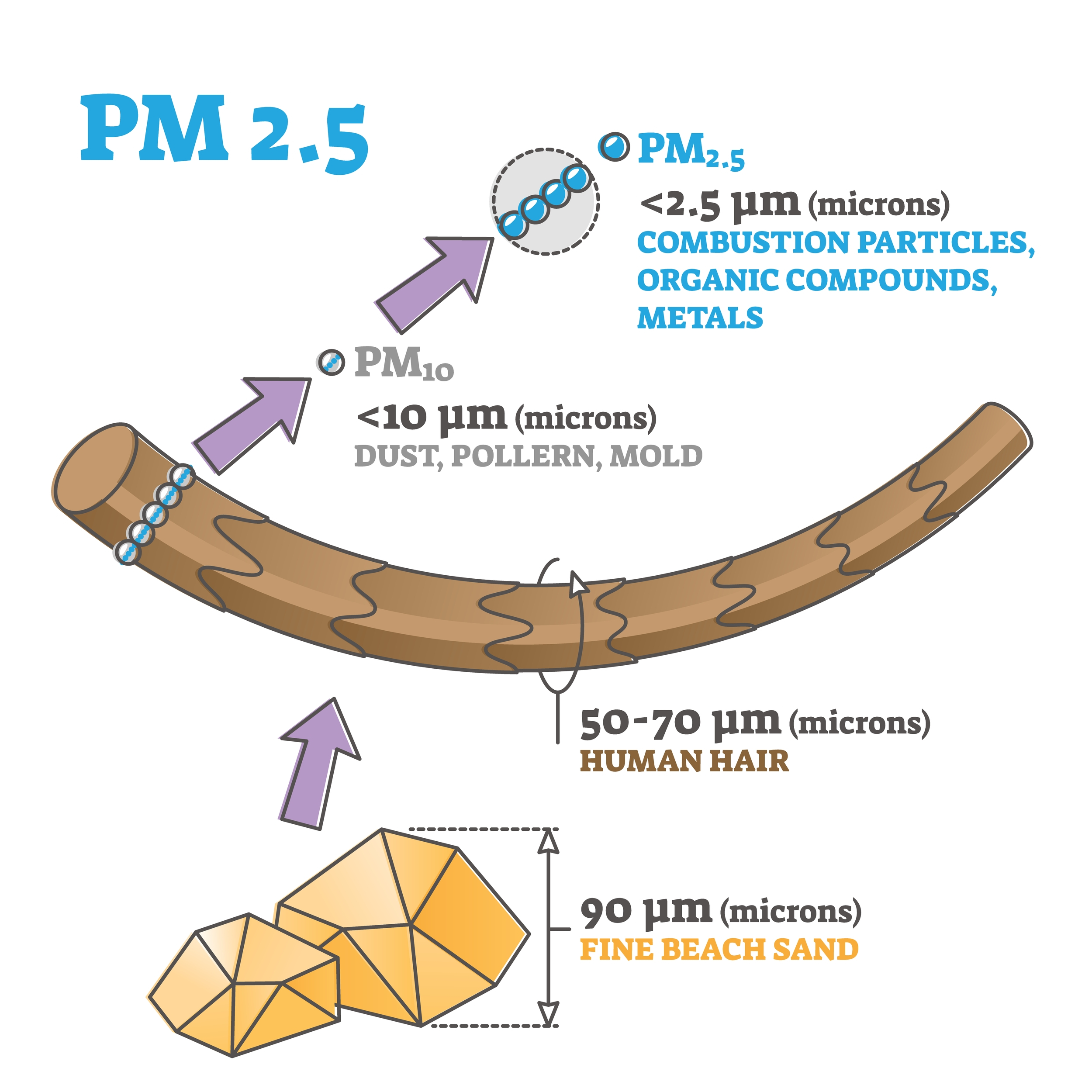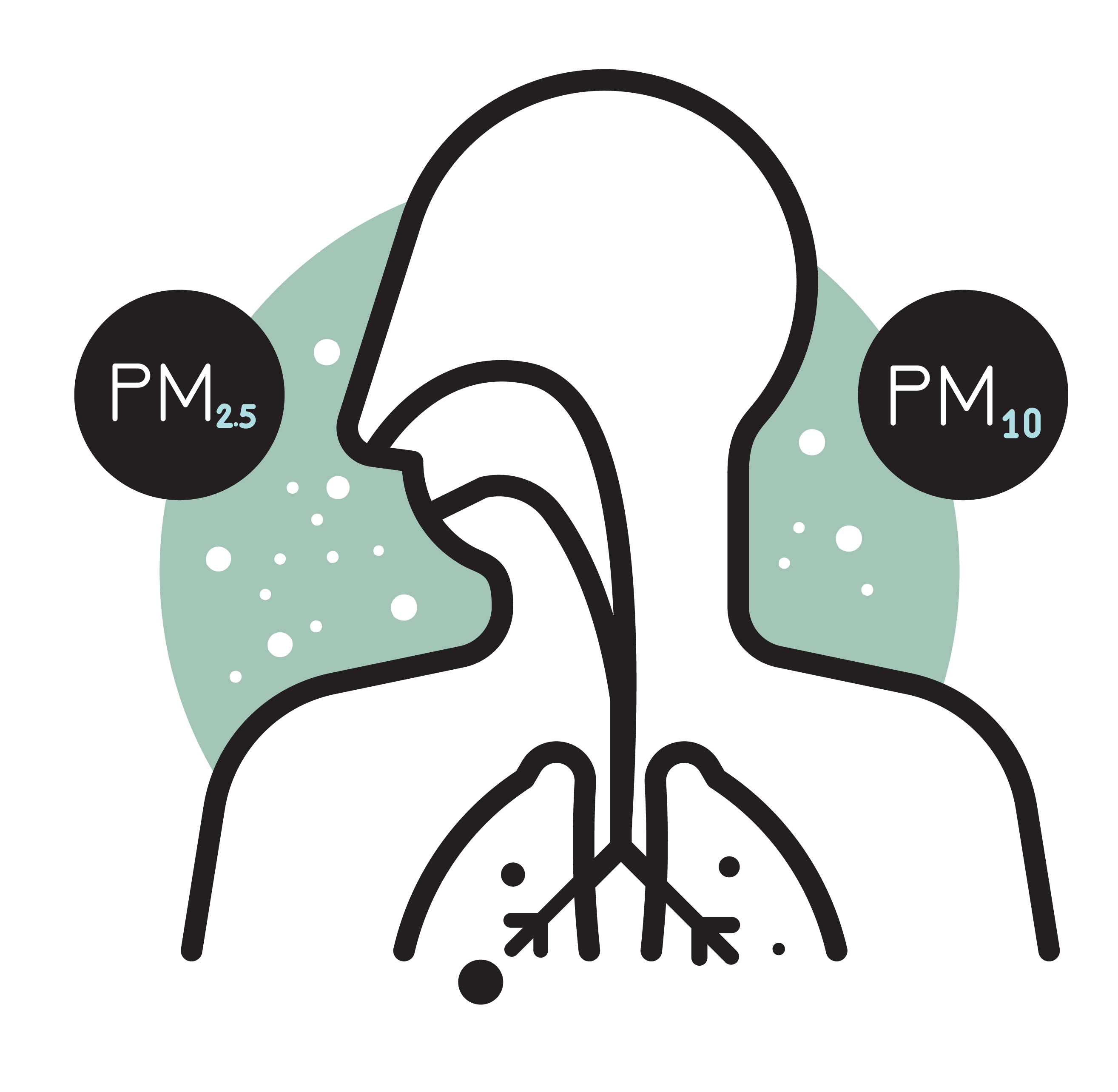|
Oxfordshire is a relatively rural county with 40% of the population living in smaller towns and villages. However, the county also contains some large urban centres including the city of Oxford. Therefore, depending on where you are in the county, air pollution may be the result of different sources and not all of Oxfordshire’s air pollution originates in Oxfordshire.
In Oxfordshire, the pollutants of biggest concern are Nitrogen Dioxide (NO2), Fine Particles (PM2.5 and PM10) and Ozone (O3). |
For example, in urban centres, traffic and domestic combustion are the sectors that more strongly contribute to particulate matter and nitrogen dioxide emissions, whilst in rural areas it is important also to look at the contributions of agriculture and industry, as important sources of air pollution.
Nitrogen Oxides
Nitrogen oxides are gaseous air pollutants. Nitrogen oxide (NO) is mostly produced by road transport emissions and other combustion processes such as the energy supply. Once released into the atmosphere, NO is rapidly transformed to NO2 which is harmful to health. Both NO and NO2 are referred to as nitrogen oxides (NOx).
Fine Particles
Particulate matter (PM) consists of solid particles and liquid droplets small enough to be suspended in the air. Currently in the UK PM with a size -diameter of 10 micrometer (µM) or less (PM10) and 2.5 µM or less (PM2.5) are measured. The width of a human hair is 5 times higher than PM10 particles and about 20 times higher than PM2.5 particles.

Particulate matter is composed of a wide range of materials, natural and human-made, including sources such as:
- Domestic combustion sources (heating; cooking)
- Industry
- Road traffic (such as tailpipe, tyre and break wear and road dust)
- Construction activities (such as demolition, earthworks, construction and track-out)
- Desert dust, pollen, volcano activity, forest fires
The health effects of PM vary; the smaller the particle the further it can travel in the human body upon inhalation. Fine particles can be carried deep into the lungs where they can cause inflammation and a worsening of the conditions such as heart and lung diseases. In addition, they may carry substances that can cause cancer into the lungs. As PM2.5 particles are so small they can enter the blood stream and be carried around the body.

Ozone
Ozone is a naturally occurring gas in the upper layers of the atmosphere, between 10 and 30 miles above the earth’s surface, which protects the earth from the sun’s harmful ultraviolet rays. You'll probably have heard it referred to as the ozone layer.
However, at ground level, ozone is a harmful air pollutant. Ozone is not emitted directly from any humanmade source. It arises from chemical reactions between various air pollutants, initiated by strong sunlight. This means that the highest levels of ozone pollution occur in the summer on hot, sunny, windless days. Formation can take place over several hours or days and may have arisen from emissions many hundreds, or even thousands of kilometres away.
Ground level ozone can have a noticeable effect on health, triggering asthma, causing breathing problems, reducing lung function and potentially causing lung diseases. At sufficiently high concentrations, ozone is also harmful to plants and trees. In addition, ozone can also corrode building materials, statues, monuments, and natural rock features in the landscape.
Ozone is an area wide pollutant, and whilst monitoring sites are relatively sparse compared to those monitoring NO2, they represent wider population exposure, so a single site may represent the ozone concentrations that hundreds of thousands of people have been exposed to. For this reason, local measures alone are not enough to tackle the problem and actions at different levels of governance (i.e. regionally and internationally) are required.
Further information on Air Quality Pollutants can be found here.

